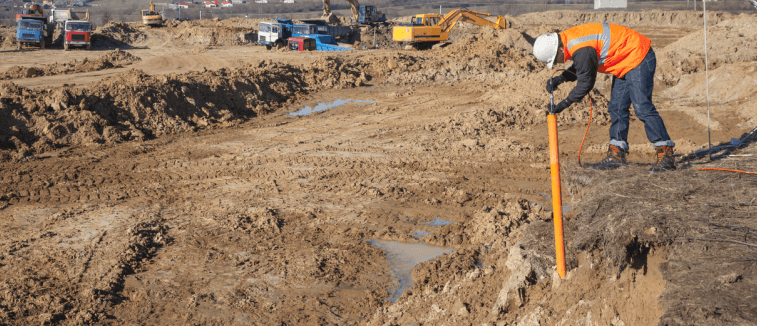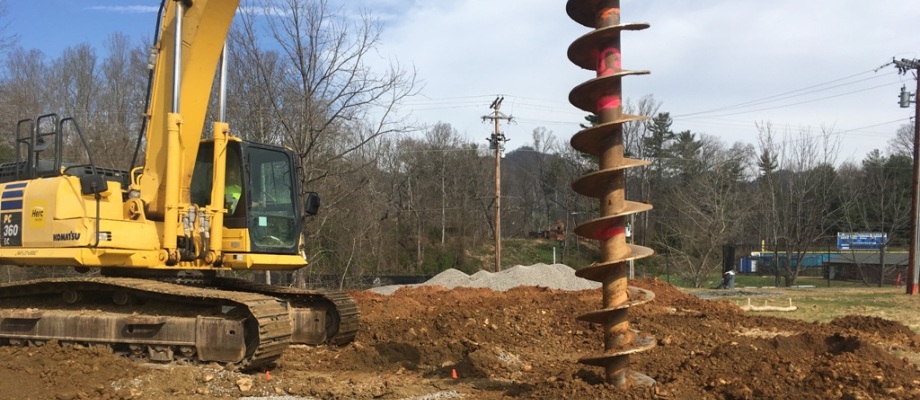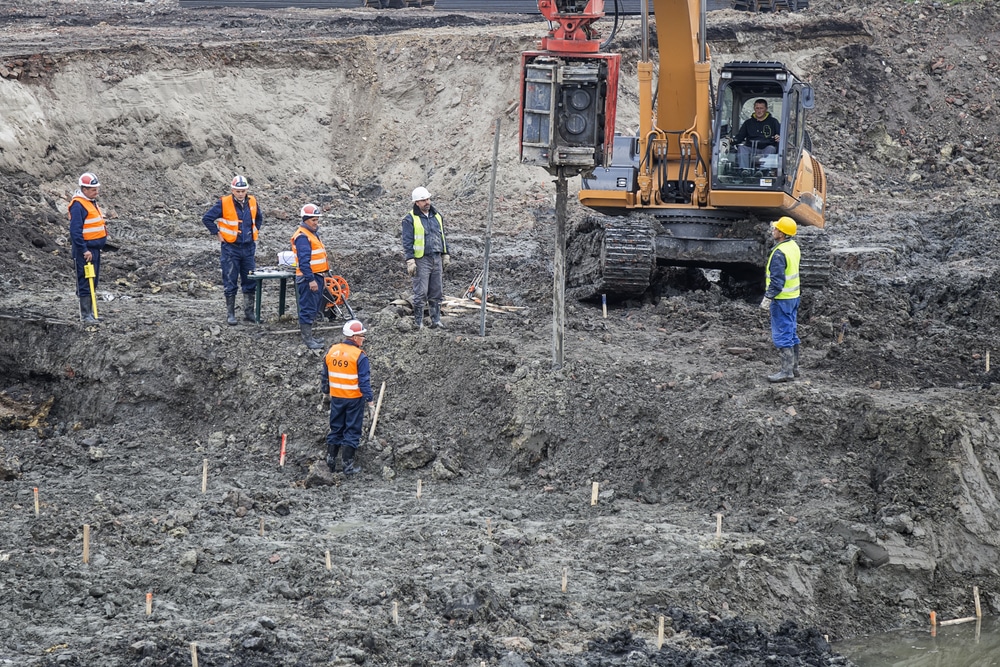Tailings Engineer: Important Knowledge for Sustainable Waste Monitoring in Mining
Wiki Article
Understanding the Vital Role of the Geotechnical Sector in Modern Building And Construction Projects and Framework Advancement
The geotechnical industry is a keystone of contemporary building and construction and infrastructure growth, supplying important insights right into soil behavior that straight affect job end results. Through advanced dirt analyses and cutting-edge engineering remedies, geotechnical professionals not just guarantee structural honesty yet additionally address sustainability issues amidst progressing environmental standards.Value of Dirt Assessment
Dirt analysis plays a crucial function in the geotechnical sector, acting as the structure for notified decision-making in building and construction jobs. Accurate dirt assessment is essential for identifying the viability of a website for various kinds of frameworks, including domestic homes, commercial structures, and bridges. By examining dirt structure, stamina, thickness, and moisture web content, designers can prepare for possible challenges and minimize risks connected with ground instability, erosion, and negotiation.The analysis process commonly involves a series of examinations and monitorings that give crucial information regarding the subsurface conditions. This information notifies the layout and building and construction processes, ensuring that structures are improved strong ground with appropriate assistance. Furthermore, understanding the dirt profile makes it possible for engineers to choose ideal building techniques and products, optimizing source usage and reducing expenses.
In enhancement to ensuring structural honesty, dirt evaluation contributes to ecological sustainability. By identifying prospective contamination or damaging impacts on surrounding ecosystems, designers can apply techniques to shield these natural deposits. Generally, extensive dirt evaluation is vital in the geotechnical area, underpinning the safety, effectiveness, and ecological duty of building jobs.
Trick Geotechnical Methods
A selection of essential geotechnical strategies are used to enhance the security and examine and efficiency of building and construction sites. One fundamental technique is dirt sampling and testing, which enables engineers to establish the physical and chemical residential properties of the ground. This information is crucial for making informed choices pertaining to structure layout and building and construction methods.Another essential strategy is website characterization, which involves the thorough evaluation of soil and rock conditions through approaches such as borehole drilling and in-situ screening. Strategies like Requirement Infiltration Tests (SPT) and Cone Penetration Examinations (CPT) give beneficial data on dirt strength and stratigraphy.
Ground renovation methods, such as dirt stabilization and grouting, are likewise vital in boosting the load-bearing ability of weak dirts. These approaches can reduce settlement and improve general site problems.
Additionally, incline stability analysis is essential for recognizing prospective landslide threats and making certain the safety and security of excavations. This analysis commonly employs mathematical modeling and limitation stability approaches to predict dirt actions under numerous problems.
Incorporating these geotechnical methods right into building and construction planning not just maximizes project results yet likewise guarantees the long-lasting sustainability of infrastructure development.
Influence On Construction Safety

In addition, i was reading this reliable geotechnical design entails executing reduction techniques for determined dangers. This might include dirt stablizing techniques, keeping frameworks, or drainage systems to relieve hydrostatic pressure. By addressing these factors, building groups can lower the likelihood of accidents and improve worker security.
In addition, constant surveillance of site conditions is crucial throughout building and construction. Geotechnical instruments can offer real-time data pertaining to ground movement and security, permitting timely treatments when needed.
Essentially, the geotechnical industry plays a pivotal function in protecting building and construction tasks. By prioritizing ground integrity and using extensive analysis methods, the geotechnical market not just secures the workforce but likewise adds to the longevity and dependability of constructed facilities.
Sustainability in Geotechnical Practices

Moreover, geotechnical designers are now employing sophisticated technologies, such as geosynthetics, which improve soil security while minimizing the volume of product required. This not only conserves sources however additionally leads to much less waste generation (geotechnical engineers). The integration of sustainable layout concepts into geotechnical design motivates using renewable resource sources in construction processes, better reducing carbon discharges
Additionally, detailed website analyses are important for recognizing prospective ecological influences prior to construction begins. By carrying out these evaluations, geotechnical specialists can establish approaches that minimize negative effects, guaranteeing conformity with environmental laws. Generally, the emphasis Your Domain Name on sustainability within geotechnical methods not only adds to the longevity and strength of infrastructure however additionally advertises a responsible technique to land and resource monitoring. This commitment is crucial for fostering sustainable development in the modern building landscape.
Future Trends in Geotechnical Design
Innovation is driving the future of geotechnical design, as emerging innovations and methods improve the market. The integration of advanced information analytics and expert system is readied to reinvent website examination and danger evaluation, allowing designers to make even more educated choices based upon real-time data. Moreover, the use of geosynthetic products is obtaining grip, using sustainable options that enhance soil security and decrease environmental influence.An additional significant pattern is the fostering of automated and robotic systems for surveillance and building processes. These modern technologies not just improve precision but also improve safety and security by reducing human participation in hazardous settings. In addition, the execution of Structure Info Modeling (BIM) in geotechnical style assists in improved cooperation amongst stakeholders, maximizing project delivery and minimizing prices.
As climate modification poses brand-new difficulties, the market is significantly concentrating on durability and versatility in design techniques, making sure infrastructure can hold up against extreme weather condition occasions. The ongoing fad towards sustainability will drive innovation in eco-friendly materials and approaches, aligning geotechnical engineering with more comprehensive environmental objectives. Collectively, these trends will certainly form a much more reliable, lasting, and durable geotechnical landscape for future jobs.
Conclusion

The geotechnical industry is a cornerstone of modern-day building and construction and framework advancement, giving crucial insights into dirt habits that straight affect project end results. consulting engineer.Soil assessment plays a crucial function in the geotechnical sector, offering as the foundation for educated decision-making in building jobs. In general, thorough dirt analysis is look these up vital in the geotechnical field, underpinning the safety, efficiency, and environmental duty of building and construction projects
Building and construction safety is significantly affected by geotechnical methods, as the stability and integrity of the ground straight influence the total safety and security of a construction website.In conclusion, the geotechnical sector is vital in modern building and facilities development, giving vital assessments that ensure structural stability and safety and security.
Report this wiki page